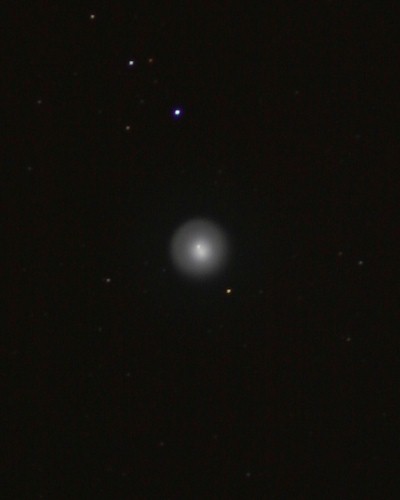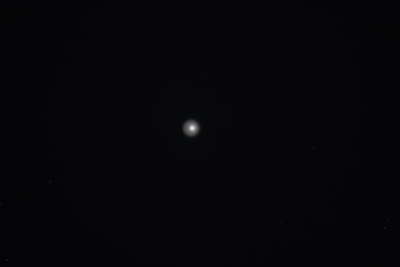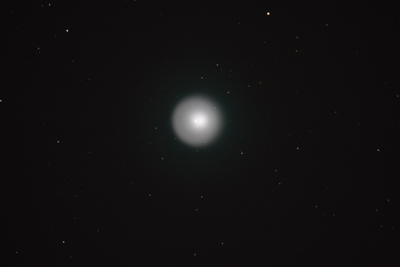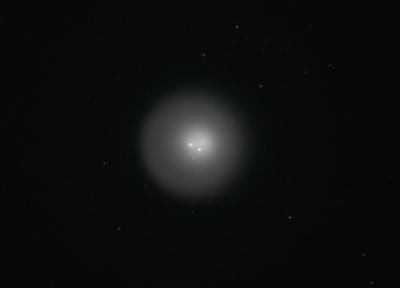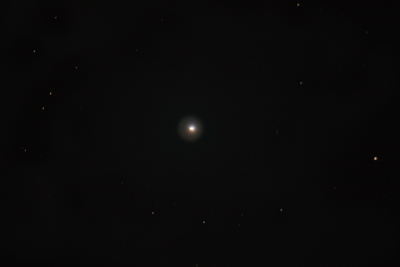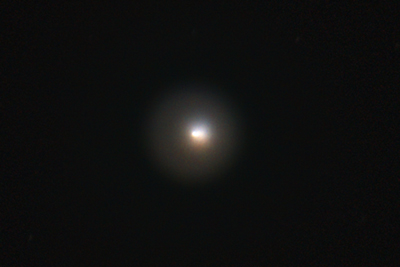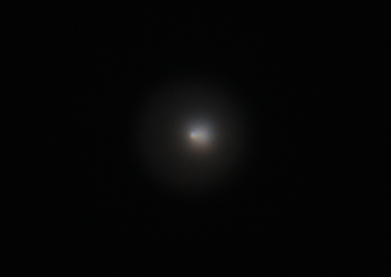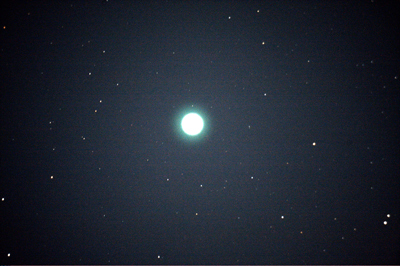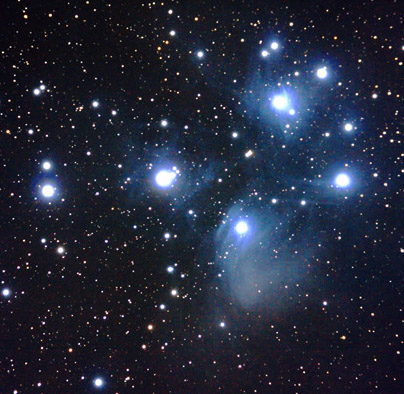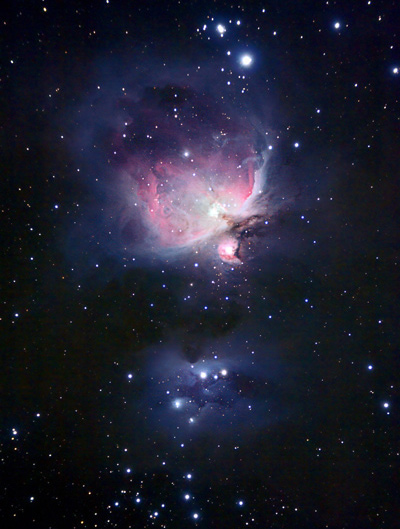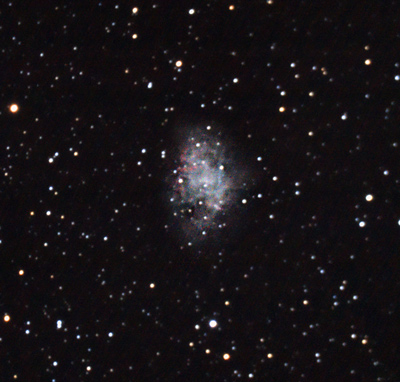?WOW!!! That is sooooo CUTE!!!?
Jackie has a way with words! I?ve never seen a comet like Comet Holmes. Actually, I?ve never seen ANY astronomical object anything like this little cutie. After arriving at the alternate site about 9:50 and missing Jackie by about 5 minutes, I viewed the comet with my 7 x 50 binocs and estimated its brightness at about 2.5. It appear orange-ish to me and definitely shows up as a non-stellar object in binocs. In spite of being alone on a dark road in the middle of nowhere, I could not resist setting up my telescope to get a better view of the comet. Because it is so bright, the comet bears magnification well. (I can’t wait to see it in a bigger scope!!)
Jackie came flying back to the alternate site after calling my cell and discovering that I was there. We spent the next hour and a half observing the comet and photographing it through my 70 mm Pronto. To pick up the beautiful structure within the comet, we needed to use short exposures. Longer exposures did not show any sign of a tail or outlying structure.
To me, the halo around the bright, inner core appeared like a finely and faintly made spirograph pattern ? textured, not uniform. Both Jackie and I thought the core appeared at times oval and then round. It could have been the seeing or possibly (especially in my case) astigmatism. In any event, it is a beautiful sight and I?m sure it is going to continue to be full of surprises.
You can bet that these two enthusiastic Astrodollies will be glued to our eyepieces and cameras as long as Comet Cutie is in the sky!
Ann T.
Astrodollie
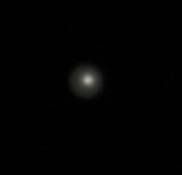
Comet 17P by Jackie Fulton
